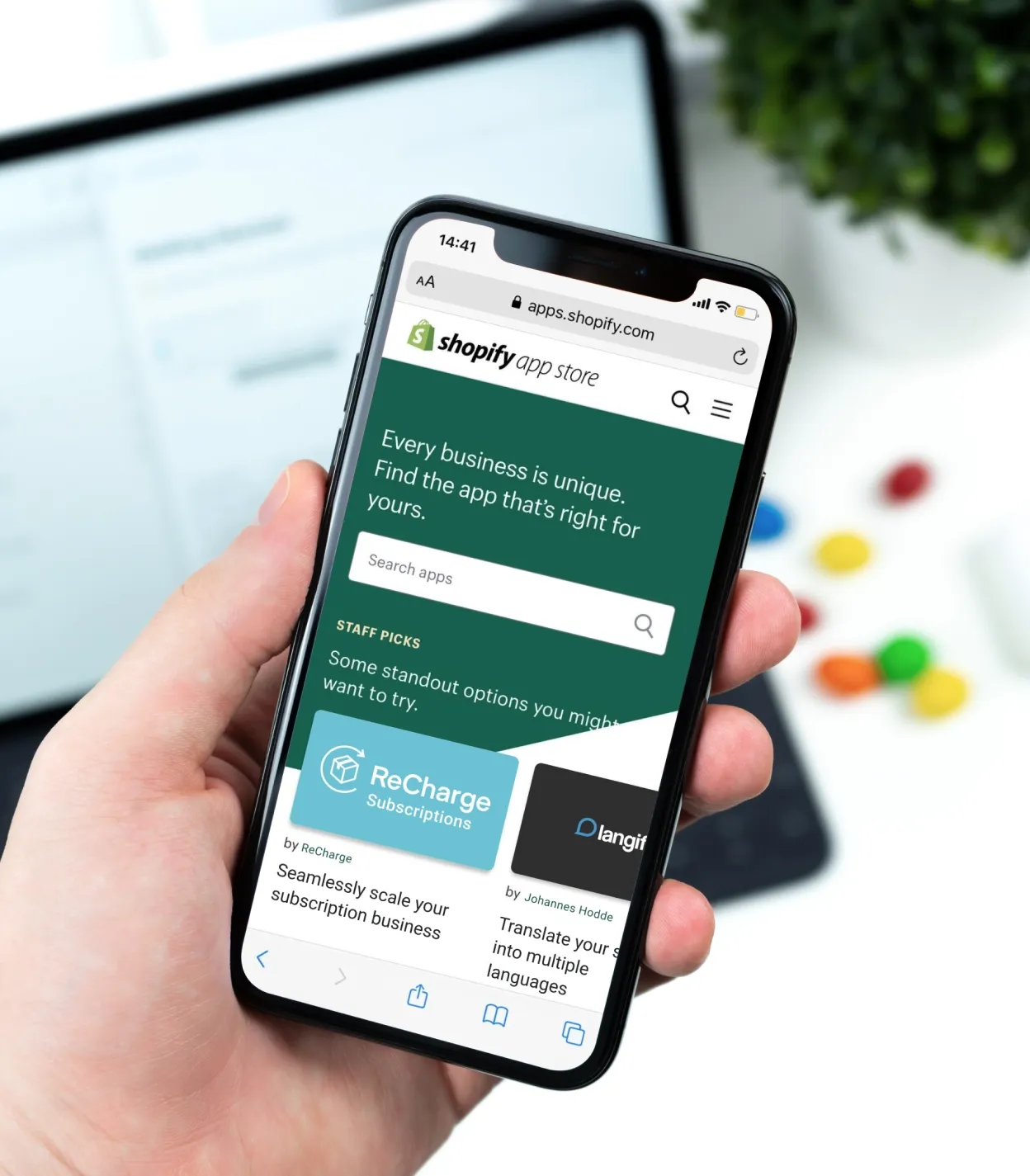
The COVID-19 pandemic has spurred the growth of e-commerce. However, this market is changing not only in size but in structure. Monobrand e-commerce websites are losing ground to online marketplaces. By 2025, the marketplaces will dominate some product categories, including clothing, books, and travel. That’s why you might be interested in building your own marketplace, particularly how to create a marketplace on Shopify.
Such e-commerce solutions are beneficial for all parties involved. Marketplaces attract buyers, as they can find many of their desired products from various shops in one place. Retailers are eager to get access to a broader range of potential customers. Owning such a multi-vendor e-commerce website also has its merits. Marketplaces can expand quickly, offer diverse monetization options, and reduce financial risks linked to inventory management. Moreover, logistics, warehousing, and delivery are vendors’ responsibilities.
However, building a marketplace from the ground up may be challenging and time-consuming. That’s why a set of efficient tools for marketplace creation from such a renowned e-commerce platform as Shopify can come in handy.
The Shopify Marketplace Kit is one of the recent additions to the Shopify arsenal. With its help, you can create and manage a marketplace in a single dashboard or use marketplace platform APIs for your custom solution. You get a package with pre-fabricated UI and can build important customer-facing features in minutes.
In this article, we will review those instruments and the ways to use them.
Why create a marketplace with Shopify?
There are various ways to build an online marketplace. So why use the Shopify platform for this task? Here are the key reasons.
Ease of use
Creating your online store with Shopify is much easier than building it from scratch. The same goes for marketplaces. If you have an existing platform, you can use flexible APIs to add commerce to it.
Otherwise, you can rely on the Shopify Marketplace Kit and marketplace apps to create something new. Shopify claims that with their help, you can build a basic marketplace in just eight minutes.
Lower cost
Building a custom marketplace from scratch is not only difficult but also costly. You will need your development team to work out all the details themselves. Shopify offers a free marketplace builder to jumpstart this process. Therefore, using it is a much more cost-effective option.
Proven tech solutions
Shopify put years of experience into the Marketplace Kit. Its experts have researched the common patterns and made them readily accessible to users. Some well-known brands such as Meta, Pinterest, and TikTok have used Shopify to add commerce to their platforms.
Abundant customization options
Shopify provides a command center to manage a substantial stack of resources. With its help, you can build an e-commerce marketplace as you like. If you decide to create a marketplace website Shopify, you can select and add only the features you require.
Access to Shopify merchants
A lot of merchants use Shopify for their online shops. According to SimilarTech, more than half a million websites utilize this platform, which makes it one of the most popular choices for building an e-store. Shopify claims to serve ‘millions’ of merchants. Thus, you have a large pool of sellers who can quickly join your marketplace.
How does a Shopify marketplace work?
To create Shopify marketplace, you should understand the way it works. The Shopify Marketplace Kit provides a set of APIs, webhooks (configurations for data exchanges between apps), and UI components to simplify the process of marketplace development. In addition, the Kit links the users of your platform with Shopify merchants and their products.
To ensure efficient data-fetching, the Marketplace Kit uses the Storefront API. With its help, buyers can perform a set of actions such as viewing products, adding them to a cart, and checking out.
A channel app created by the Partner connects merchants to your platform. A merchant can install this app in the Shopify admin and get the ability to publish products. The app surfaces those products on the marketplace platform. Thus, you get multiple merchants who offer some products and buyers purchasing those products – a basic marketplace.
The diagram below explains this process in more detail.
The key steps are as follows:
Shopify approves your channel app.
Merchants install this app using OAuth. After that, they get access to data.
The application creates and saves access tokens. Also, it registers webhooks.
An onboarding flow, included in the app, checks a new e-store against marketplace requirements. If the requirements are met, a merchant can publish products to the app.
Merchants accept terms and conditions and start publishing products on the app.
The marketplace manages and displays the products.
Buyers choose the products they like and complete the checkout on the merchant's online store to order them.
The orders are translated into webhook events and attributed to marketplaces.
Merchants fulfill the orders.
The app bills merchants for using the marketplace to make sales.
Shopify Marketplace Kit apps
The latest version of the Marketplace Kit simplifies the process of marketplace creation with the Shopify Marketplace Admin app and Shopify Marketplaces Buyer app. The former is the merchant-facing marketplace app. It provides such essential functionality as authentication, basic pages, Channels-UI integration, routing, and key API calls.
The Shopify Marketplaces Buyer app can serve as the cornerstone for the buyer-facing part of the project. Essentially you get a basic marketplace with a front-end and back-end. The app isn’t an out-of-the-box solution. However, it includes key features and API calls to simplify the initial setup. If you decide to build a marketplace with Shopify, a reliable technology provider like DigitalSuits can help you to use these apps as the starting point to create your unique solution.
The key features of a Shopify marketplace
Shopify will provide your marketplace with all the necessary functionality. Here are some of the main features:
Product listings
You can customize the way products are displayed in your marketplace. On top of it, you control the information the customers see. For instance, a product description page can include variant pickers such as available colors or sizes. Shopify allows adding Buy Now buttons redirecting buyers to an online store for checkout. Also, merchants can specify the store policies on the product description pages.
Storefronts
With Shopify, you can allow merchants to present their brands vividly and enticingly. They will have their own pages to showcase their entire inventory, using different media and providing multiple details. The customers will have ample opportunities to find the goods or services they need. In particular, they will be able to order products by specific criteria (for instance, name) or filter them (for example, by price ranges). Segmenting products by categories is also possible. Note that the search, order, and filter options are also available for shop discovery.
Cart and checkout
Shopify offers two ways to deal with how customers make orders. One way is to direct buyers to the merchant’s store and complete the purchase there. Another is to use Shopify's secure web checkout. The e-commerce platform allows you to create a marketplace-level cart page. It will display the products across all shops as well as the estimated costs.
How to get started with a Shopify marketplace?
You may try to build a marketplace with Shopify yourself, even if you aren’t an e-commerce software developer. Note, however, that some coding skills are required. Let’s have a look at a guide on how to get a basic Shopify marketplace up and running. You can’t start the process from scratch. Here are several things you need to do first:
Install the latest versions of Node.js, a JavaScript runtime environment, and npm, a package manager for JavaScript.
Install the Shopify CLI– a command-line interface instrument for building Shopify apps.
Install the Sequelize CLI – a command-line interface for Sequelize, a Node.js module simplifying work with relational databases (MySQL, Postgres, etc.)
Install the Yarn package manager.
Create a Shopify Partner account and a development store.
Create an app in the Partner’s dashboard and transform it into a sales channel.
After that, the actual creation of a marketplace can be started:
Clone the Shopify Marketplaces Admin app from GitHub.
Install and run the yarn file with dependencies.
Run the migrations (
npx sequelize-cli db:migrate).Create a file with a ‘.env’ extenstion in the root directory and add the scopes: unauthenticated_read_product_listings,read_product_listings.
Run Shopify CLI (
shopify app serve), follow the prompts.Clone the Shopify Marketplaces Buyer app.
Install and run the yarn file with dependencies for this app.
Run buyer app.
Following these instructions, you can create a lean version of Shopify Marketplace in minutes. You or your development team can build on it to create the e-commerce solution that suits the needs of your business.
Build a successful Shopify marketplace with DigitalSuits
Shopify offers a great set of tools to launch your marketplace swiftly and with minimum coding knowledge. However, you will have to dive deeper to go beyond the basic solution. For that, you’ll need the expertise of an experienced technology partner. DigitalSuits can become such a partner for you.
We have a full-stack e-commerce development team, proficient in building and upgrading Shopify online stores. Our specialists understand all the ins and outs of this platform. They know how to edit a theme, build a custom app, or otherwise tailor a Shopify website to the needs of your business. Our team can handle such a complex task as building a headless commerce solution with a customized front-end.
We carefully study and experiment with any new features Shopify offers, including tools for marketplace creation. Therefore, we have all the knowledge required to build such an e-commerce solution. If you want to build a marketplace on Shopify, contact us!




































Was this helpful?
0
No comments yet